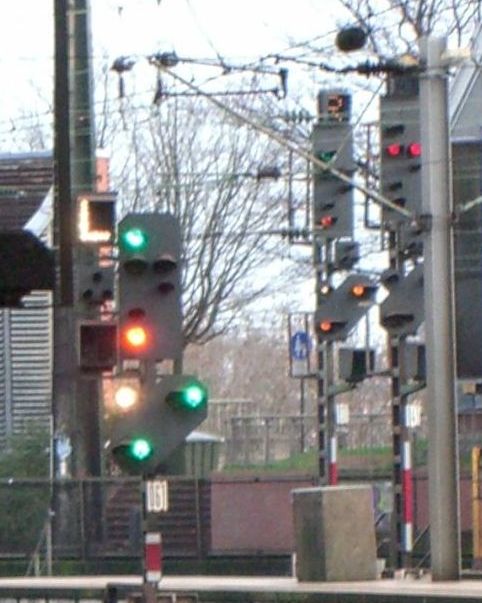
To the far left of the full image you see a line-close signal displaying a Kennlicht (marker light) to indicate that it is operationally switched off and can be ignored.
The main signal displays green-over-amber, that is aspect Hp 2: slow. The slanted head below is the distant signal displaying two green lights, that is Vr 1: expect clear. To indicate that the next signal is at reduced distance, the distant signal shows an additional white light.
To the upper left of the main signal we see a direction indicator displaying the letter "L", so the route is set to the left of the two southern bridges, i.e the centre bridge. The left (northernmost) bridge cannot be reached from these signals.
To the right we see another combination of destination indicator, main and distant signals. The right main signal also displays Hp 2 while the associated distant signal displays two amber lights (Vr 0: expect stop). The next signal is also at reduced distance (hence the white light), and the direction indicator displays an "R", so the exit route is set to the right (i.e. southernmost) bridge.
The signal in the centre (to the far right of the picture) displays Hp 0: stop, and therefore the distant signal is dark.
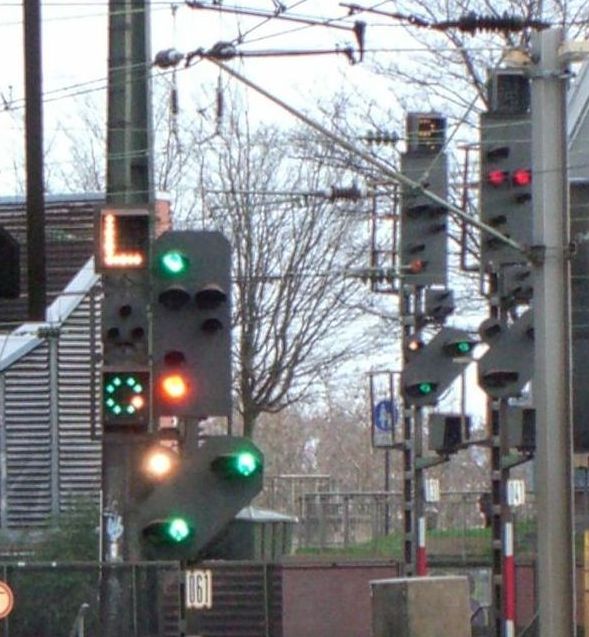
You see a green circle to the lower left of the left main signal head. That is the Zp 9 departure order signal, telling the train driver to depart. Also, the distant signal at the right track has changed to Vr 1: expect clear.
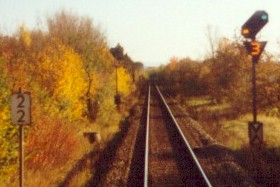
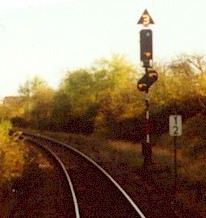
Note that the shapes of the Zs 3 and Zs 3v are irrelevant (the triangle could face up or down or could be missing), a Zs 3 has white numbers and a Zs 3v amber ones.

The signal to the right shows Hp 0 with the (now obsolete) double-red aspect. The distant signal is dark. Note that this signal is lower, because it is behind a bridge and must be seen from the platform before that bridge.
Between the main and distant heads you can see a small square box, that is a Zs 1 substitution signal.
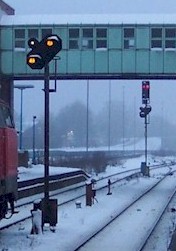
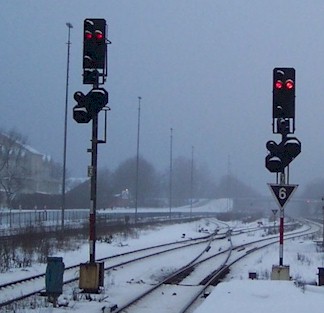
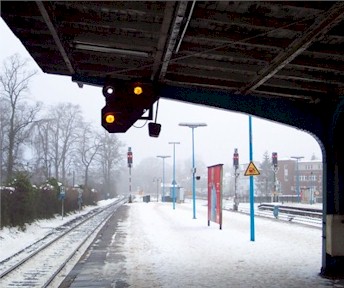


The box with the "F" is the signal telephone.
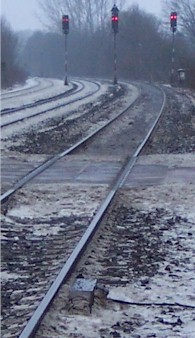

To the left there is a line-close signal which currently displays a marker light (Kennlicht) to indicate that is currently has no operational significance. Sometimes two trains can halt at the same platform, in that case, the signal displays Sh 0 (line closed) so that the platform track is separated into two blocks.
The signal on the top right is a brake test signal, and to the lower right, we see a distant signal.
This distant signal shows Vr 0 (expect stop) and indicates the aspect of the exit signal which is not visible from here as it is hidden behind the platform roof, so it is closer than braking distance (as is indicated by the additional white light).
This signal does not have the usual slanted shape but a more modern (and space saving) compact head.
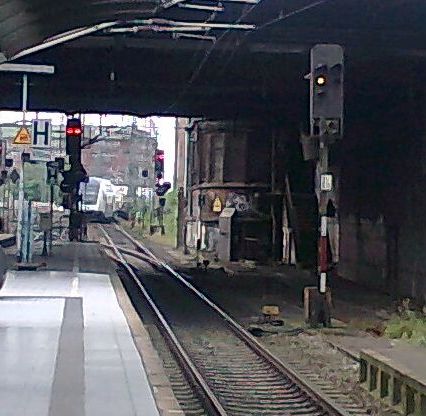
If the point is set to diverging, the train would have to halt at the first signal to the right, which would then display Hp 0 (stop). In case that the point is set to straight (as in this picture), the train has to stop at the H board which is barely visible here at the building in the background, and clearance would be given by the main signal in the background.
In that case, the main signal in front is meaningless and operationally switched off. To distinguish it from a failed (i.e. dark) signal, a single white light, the Kennlicht (marker light) is lit.
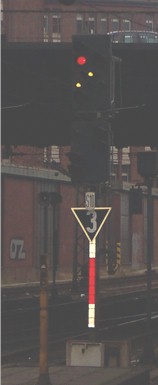
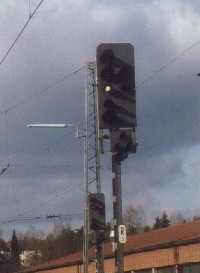
The full picture shows also a triangular Zs 3 speed signal. The diamond-shaped sign to the right is an El 6 announcer for the end of catenary.
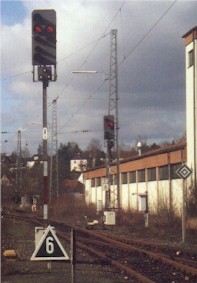
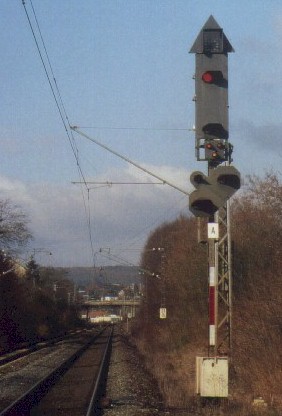
Zs 3 speed signal (extinct), main signal head at stop, Zs 7 subsidiary signal, and a distant signal head with additional light to indicate that the following main signal is closer than braking distance.
The Zs 7 means that the signal may be passed at danger, and the driver has to drive on sight towards the next main signal.
Below the distant head you see the signal number plate, see numbering of signals.
 home
home picture Index
picture Index email
email
 Hl signals
Hl signals